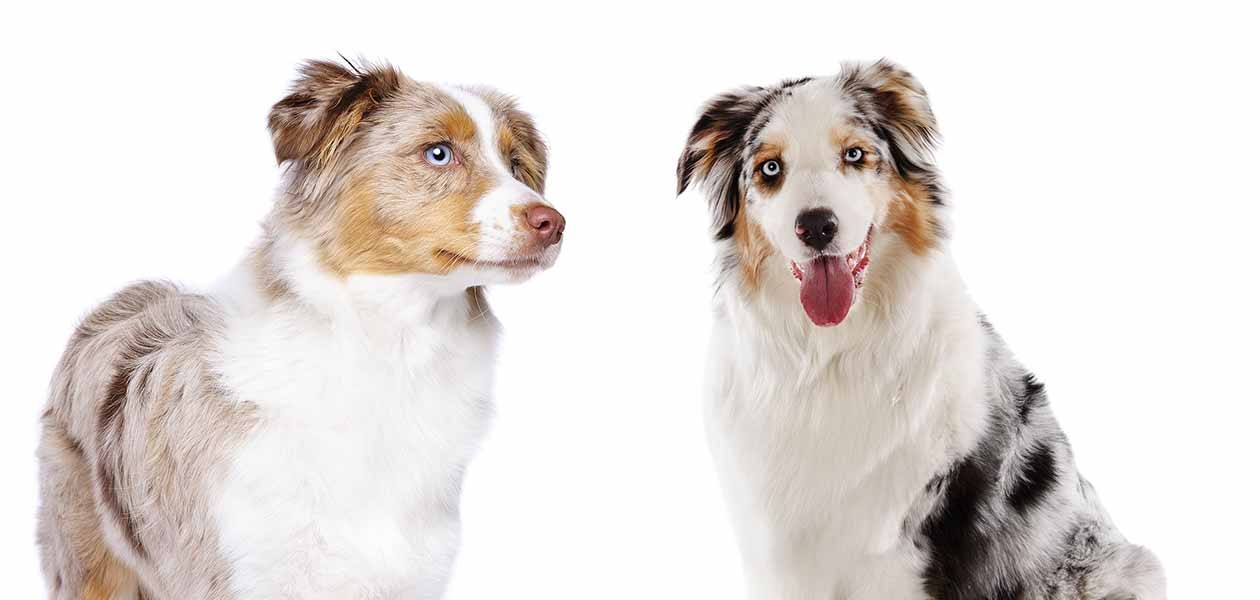
The American Shepherd and Australian Shepherd, while sharing common ancestry, represent two distinct breeds with notable differences. The American Shepherd, officially recognized by the AKC in 2015 as the Miniature American Shepherd, was selectively bred from Australian Shepherds in the 1960s to create a smaller companion dog while maintaining herding instincts. Despite their similar appearances and behavioral traits, these breeds differ primarily in size, temperament, and specific breed characteristics. Understanding these distinctions is crucial for potential owners to make an informed decision based on their lifestyle, living situation, and expectations from a canine companion.
American Shepherd vs Australian Shepherd
Genetic Health Considerations
While both breeds share some common health issues, there are distinct differences in their genetic predispositions. American Shepherds tend to have fewer genetic health concerns overall, with specific conditions like progressive retinal atrophy and medication sensitivity being more prevalent. Australian Shepherds are more prone to epilepsy and deafness, requiring additional health screening and monitoring throughout their lives.
Working Capabilities and Herding Traits
The breeds exhibit notable differences in their working styles and herding behaviors. Australian Shepherds were specifically developed as ultimate herding dogs, excelling in competitive events like flyball and agility trials. In contrast, American Shepherds, while retaining herding instincts, are less commonly used as working dogs and demonstrate a more refined, less intense approach to herding activities. This distinction makes American Shepherds more adaptable to non-working environments while maintaining their intelligent and trainable nature. Australian Shepherds typically require more challenging tasks and consistent mental stimulation to prevent boredom and maintain their working drive.
Size and Physical Characteristics
Dimensional Measurements
American Shepherds measure between 13-18 inches in height, with males being 14-18 inches and females 13-17 inches tall. Their weight ranges from 20-40 pounds for both genders. In contrast, Australian Shepherds are notably larger, with males reaching 20-23 inches and females 18-21 inches in height. Male Australian Shepherds typically weigh 50-65 pounds, while females weigh 40-55 pounds.
Coat Characteristics and Colors
Both breeds showcase distinctive double coats, though with subtle variations. American Shepherds can express more white in their coat patterns, while maintaining the traditional color varieties including merle, black, red merle, and tricolor combinations. Their coat texture tends to be moderate in length and slightly refined compared to Australian Shepherds. The Australian Shepherd's coat is notably weather-resistant and requires more extensive grooming maintenance. Both breeds feature the characteristic merle, black, red tricolor, and blue merle colorations, with the tricolor pattern incorporating white and tan or copper markings.
Temperament and Training
Personality Differences
American Shepherds demonstrate higher sensitivity levels and stronger affectionate tendencies compared to Australian Shepherds. This heightened sensitivity can make them more prone to anxiety and barking behaviors when understimulated. Australian Shepherds exhibit a more independent nature and tend to be more vocal and "talkative" when alerting their families, though they may show less overt affection.
Training Requirements and Adaptability
While both breeds excel in training due to their intelligence, their approaches differ significantly. American Shepherds' sensitivity requires gentler training methods, though they master obedience commands readily. Their focus and eagerness to please make them excellent candidates for basic obedience, though they may take longer to overcome certain triggers due to their sensitive nature. In contrast, Australian Shepherds thrive with more rigorous training protocols and excel particularly in physical trials. They require consistent mental challenges to prevent boredom and destructive behaviors. Both breeds need extensive socialization from an early age, though Australian Shepherds may require more intensive exposure to develop confidence around strangers and other animals.
American Shepherd vs Australian Shepherd
Exercise and Activity Requirements
While both breeds need regular exercise, their specific needs differ notably. American Shepherds require around 1+ hours of daily activity but can adapt to less intense exercise routines compared to their larger counterparts. They excel in moderate activities and mental stimulation games. In contrast, Australian Shepherds demand more vigorous physical activity and thrive in active households where they can participate in strenuous activities like hiking and agility training. Without adequate exercise, both breeds can develop destructive behaviors, though Australian Shepherds typically require more intensive activity management.
Living Environment Adaptability
The breeds show distinct differences in their adaptation to various living spaces. American Shepherds, due to their smaller size and slightly lower energy levels, can adapt better to apartment living when provided with sufficient exercise. However, they still require regular outdoor activities and mental stimulation to prevent anxiety-related behaviors. Australian Shepherds, being larger and more energetic, generally need more space and are better suited to homes with yards where they can expend their energy. Their strong herding instincts and higher exercise requirements make them less adaptable to confined living spaces, even with regular exercise routines.
Conclusion
The comparison between American Shepherds and Australian Shepherds reveals distinct differences in size, temperament, and care requirements despite their shared herding heritage. American Shepherds are notably smaller (13-18 inches tall, 20-40 pounds) and generally display higher sensitivity and stronger affectionate tendencies, making them more adaptable to apartment living when properly exercised. In contrast, Australian Shepherds are larger (18-23 inches tall, 40-65 pounds), more independent, and require more vigorous physical activity and mental stimulation due to their intense working drive.
These differences have important implications for potential owners. Those seeking a more manageable companion that can adapt to urban living while maintaining herding traits might prefer the American Shepherd, provided they can accommodate their sensitivity and exercise needs. Australian Shepherds are better suited for active households with ample space and time for intensive exercise and training. Both breeds require dedicated training and socialization, though Australian Shepherds typically need more rigorous physical activity while American Shepherds benefit from gentler training approaches due to their sensitive nature.